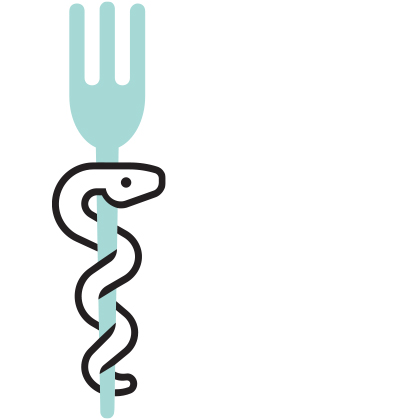 Johns Hopkins psychologist Kay Redfield Jamison, the Dalio Professor of Mood Disorders, has forged an influential career by thinking outside the box.
Johns Hopkins psychologist Kay Redfield Jamison, the Dalio Professor of Mood Disorders, has forged an influential career by thinking outside the box.
The recipient of a MacArthur “Genius Grant,” she’s written several well-received books that offer thought-provoking ideas about the links between creativity and mental illness – most recently one about American poet Robert Lowell (see accompanying story).
As someone who has lived with manic depression (bipolar disorder) since early in her academic career – she was diagnosed soon after joining the UCLA faculty as an assistant professor in the early 1970s – Jamison knows firsthand the challenges the illness can present. But, she points out, there are also positives. And it’s precisely these positives that have led to her latest outside-the-box idea, which she shared in early October at the Center for Innovative Medicine Board Retreat. “When it comes to medical school admissions, people with mental illness are pretty much ruled out, and this has had real consequences,” she says. “We are excluding people from the field of medicine who have some very interesting ways of thinking.”
“If we want to achieve true diversity in medicine,” Jamison says, “we must begin talking about ways to identify and admit people with mental illness to medical school.”
“When it comes to medical school admissions, people with mental illness are pretty much ruled out, and this has had real consequences. We are excluding people from the field of medicine who have some very interesting ways of thinking.” – Kay Redfield Jamison
There are certain kinds of temperaments, Jamison goes on to explain, that are more frequently associated with bipolar disorder and depression. “People with these illnesses often have a fiery curiosity. They are risk takers. And in academic medicine, we need this kind of temperament: People who are willing to take risks, both intellectually and scientifically. People who are willing to push the envelope by asking new questions.”
In addition, and crucially important to the goal of good doctoring: Those with mental illness have a deep understanding of what it’s like to live with suffering. “They learn from this suffering and can bring it into their work with patients,” she says.
But under the current medical school admissions system, there is no systematic effort to identify and attract candidates with mental illness. In fact, the system is set up to exclude them, Jamison says. “If you’ve taken a semester or two off for hospitalization for treatment for bipolar disorder, you almost certainly won’t be considered,” she says, “which is unfortunate since these are relatively common illnesses and they are very treatable.”
“We need to seriously start talking about this, and to expand our definition of ‘diversity’ in medical school admissions to include people with mental illness.” – Kay Redfield Jamison
While conceding that there are no “easy answers” for changing the current system, Jamison would at least like to get the conversation started, perhaps with a national summit meeting right here at the Center for Innovative Medicine at Johns Hopkins.
“We need to seriously start talking about this,” says Jamison, “and to expand our definition of ‘diversity’ in medical school admissions to include people with mental illness.”
Taking the Ache Away
Kay Redfield Jamison found a rapt audience when she delivered the 2017 annual Miller Lecture in May. The focus of her talk was powerful indeed: the experience of “losing your mind”– and the important relationship between doctor and patient that is needed for true healing. Calling on insights shared in her most recent book, Robert Lowell: Setting the River on Fire, she also examined the restorative role that writing has played for writers and poets (like Lowell) who have struggled with mental illness.
Jamison, who is the Dalio Professor of Mood Disorders at Johns Hopkins, noted that manic depression, or “mania,” was described long before Hippocrates as a sort of “burning passion” or “ferocity without fever.” While flowers and herbs were used to treat mania in the 1500s, methods grew much less humane by the 1700s. As evidence, she shared disturbing images of shackles and chains, and a close-topped iron “restraining crib” – tools commonly used during that time to control those in the throes of mania. Fortunately, treatments improved over the ensuing centuries and today include medications (such as lithium, anticonvulsants and antipsychotics), electroconvulsive therapy and psychotherapy.
It is this last, psychotherapy, that proved critically important in the wake of World War I for soldiers beset by “shell shock” from what they’d experienced on the battlefield. “They had, quite literally, lost their minds,” notes Jamison. Into the breach jumped Dr. W.H.R. Rivers, a British psychiatrist (he founded the British Journal of Psychology), who specialized in treating such soldiers. Among his patients was Siegfried Sassoon, one of the period’s great poets.
The two developed a close doctor/patient bond that proved critical to Sassoon’s ultimate healing. Rivers explained his approach to psychotherapy this way: “The doctor should make intolerable memories tolerable; he should use the controlled reflection of horror to understand what the patient has been through, to allow him to meet the horror in his own strength.”
Jamison underscored for her listeners that when it comes to mental illness, “there’s a difference between treatment and healing. Healing requires patients to be actively involved, and it demands an almost mystical relationship between patient and doctor.”
Fast forward 30 years to the rise of Lowell as one of America’s leading postwar poets. Lowell struggled with manic depression all his life. Frequently hospitalized, subjected to electric shock, and later heavily medicated with chlorpromazine and lithium, Lowell lived through periods of exultant mania and ensuing deep depression, notes Jamison.
Like Sassoon, Lowell used writing as a way to distance himself from the horror he experienced. “Writing fell to me like a life preserver,” he told one doctor in the mid-1950s. And in a 1976 letter to a friend, he penned, “How often writing takes the ache away.”
“Writing heals,” affirmed Jamison, to those assembled for the Miller Lecture: “Writing brings structure to disorder, provides escape and mastery, gives vocation and salvation, and resurrects and renews.”
Lowell appears to have welcomed the earliest stirrings of oncoming mania as much as he dreaded them. As Jamison notes in her book, the words and ideas mania revealed were a creative trove. “I write my best poetry when I’m manic,” he once professed. Later he wrote: “Darkness honestly lived through is a place of wonder and life. So much has come from there.”
Don Willett November 11th, 2017
Posted In:
 Launched nine years ago, the Miller Coulson Academy of Clinical Excellence at Johns Hopkins has now grown to include more than 70 of the institution’s top doctors.
Launched nine years ago, the Miller Coulson Academy of Clinical Excellence at Johns Hopkins has now grown to include more than 70 of the institution’s top doctors.
These are clinicians who exemplify what it means to be a great doctor: They take the time to ask questions and listen; they are good at explaining, and are discerning and wise; they have a wonderful bedside manner and always put the patient first. Because the Miller Coulson Academy is a “working academy,” these exemplary doctors have become role models to medical students and trainees across Johns Hopkins, who are able to watch and learn from them every day.
Soon the impact of the Miller Coulson Academy and its scholars will be felt far beyond Johns Hopkins, with the launch of a new website. Dubbed CLOSLER (a portmanteau of “Closer” and “Osler”), it will provide the latest news and perspectives about clinical excellence to doctors all over the country and around the world.
“We learn so much by watching great people,” says internist Scott Wright, director of the Miller Coulson Academy and the Anne G. and G. Thomas Miller Professor of Medicine. “We aim to take the outstanding role models we have right here and share them far beyond the confines of Johns Hopkins.”
“The idea is to create a ‘community of practice,’” adds psychiatrist Meg Chisolm, a Miller Coulson Academy scholar and website planner. “Studies suggest that people learn best when they are part of a learning community where they can share and exchange information and resources, and be exposed to role models.”
The new website will include original content submitted by Miller Coulson scholars and other exemplary doctors. It will also feature “curated content” – pertinent articles from the New York Times, Wall Street Journal and other publications that offer thought-provoking insights and perspectives on great doctoring.
The goal is nothing less than to make CLOSLER the “go-to” site for physicians and doctors-in-training around the world, whether they are working at a busy hospital in Idaho or a remote clinic in Zimbabwe.
When they log on, they’ll find content organized around four central “buckets” that are so crucial to clinical excellence: connecting with patients, clinical and diagnostic reasoning, maintaining passion in medicine, and the importance of lifelong learning. These are areas where Miller Coulson fellows have been making their mark at Johns Hopkins. “Now we aim to scale up what we are doing here to doctors everywhere,” says Chisolm.
“As doctors, we are being deluged by an explosion of science and technology. Now more than ever, we need to hold up doctors who are devoted to the human side of medicine as role models for the world.” – Meg Chisolm
As it evolves, planners expect CLOSLER to offer resources such as a monthly book club, a “question of the week” and monthly webinars on important issues that will be hosted by Miller Coulson Academy scholars.
CLOSLER, which will go live by early 2018, will fill an important void: Just as the Miller Coulson Academy was the first of its kind, the website will be the first online resource devoted to clinical excellence, its planners say.
And it’s crucial to get this information out there now. “There’s a sense of urgency,” says Chisolm. “As doctors, we are being deluged by an explosion of science and technology. In the face of the computer in the exam room, and all the data we must focus on, there’s been an erosion of good clinical practice. Now more than ever, we need to hold up doctors who are devoted to the human side of medicine as role models for the world.”
Fittingly enough, the new website is named for William Osler, the “father of modern medicine” and one of the “Big Four” founding professors at Johns Hopkins Hospital. He famously admonished his colleagues to “care more for the individual patient than for the special features of his disease.”
Explains Wright with a smile, “With the new website, CLOSLER, we aim to get ‘closer’ to ‘Osler.’”
Don Willett November 11th, 2017
Posted In:
 Week after week, Pankaj “Jay” Pasricha and his Johns Hopkins colleagues at the Amos Food, Body and Mind Center see patients whose lives have been turned upside down by motility disorders.
Week after week, Pankaj “Jay” Pasricha and his Johns Hopkins colleagues at the Amos Food, Body and Mind Center see patients whose lives have been turned upside down by motility disorders.
While their symptoms may vary, all of these patients have one thing in common: the nervous system of the gut, known as the “enteric nervous system,” has gone awry. The result? These patients – men and women, young and old – must cope daily with debilitating chronic symptoms, including abdominal pain, bloating and distention, nausea and vomiting, and diarrhea and constipation.
Many patients who suffer from motility disorders have seen specialist after specialist, over many years, only to be told that the cause of their pain and discomfort is unknown.
When they arrive at the Amos Center, they find hope. Launched in 2014 with the help of a generous gift provided by Mrs. Courtney Amos and Mr. Paul S. Amos, the center is one of a few places in the world dedicated to studying the links between diet and disease, and also the role of good and bad bacteria in making us sick and keeping us healthy.
“In the Amos group, we are working to figure out what causes the motility disorders our patients come to us with, so we can work toward finding the best treatments,” says Pasricha, who is also director of the Center of Neurogasterenterology at Johns Hopkins.
“Part of this process,” he explains, “is identifying patterns of symptoms that occur together in certain patients, which provides clues into what the underlying cause may be and helps point us in the right direction in terms of selecting a treatment.”
The Amos Center is one of a few places in the world dedicated to studying the links between diet and disease, and also the role of good and bad bacteria in making us sick and keeping us healthy.
Recently, Pasricha has described a new syndrome based on his team’s observations of a particular subgroup of patients. He’s dubbed this syndrome “JAG-A,” for the conditions it encompasses. The acronym stands for:
“Describing the JAG-A syndrome and the criteria by which a patient may fit into the group has helped us identify patients who may have an underlying autoimmune problem that is contributing to or causing their motility disorder,” says Pasricha.
“This has helped guide our decision to treat them in a new and different way—with an infusion medication called IVIG.”
Doctors have typically used IVIG to treat immunodeficiencies, certain inflammatory conditions and nervous system conditions, such as Guillain-Barre or stiff person syndrome. “Currently,” says Pasricha, “its only rarely been tried in patients with motility disorders.”
Many of those who have completed a four-month trial of IVIG infusions have reported significant improvement in their motility symptoms. “This lends support to our hypothesis of an underlying autoimmune condition at least in some patients with motility disorders,” says Pasricha.
So far he and his team have treated 10 JAG-A patients with IVIG, “and we anticipate beginning many more in the near future,” he says. The good news? Many of those who have completed a four-month trial of IVIG infusions have reported significant improvement in their motility symptoms.
“This lends support to our hypothesis of an underlying autoimmune condition at least in some patients with motility disorders,” says Pasricha.
The Amos Center team has an ongoing study tracking the progress of patients who undergo IVIG infusion and will be sharing the results of their work once the study is complete.
“Ultimately, we hope to help not only the patients we see but countless others through our research efforts at the Amos Center,” says Pasricha.
Don Willett November 11th, 2017
Posted In: